GLOBE Connections
GLOBE Connections: Changing Albedo Values
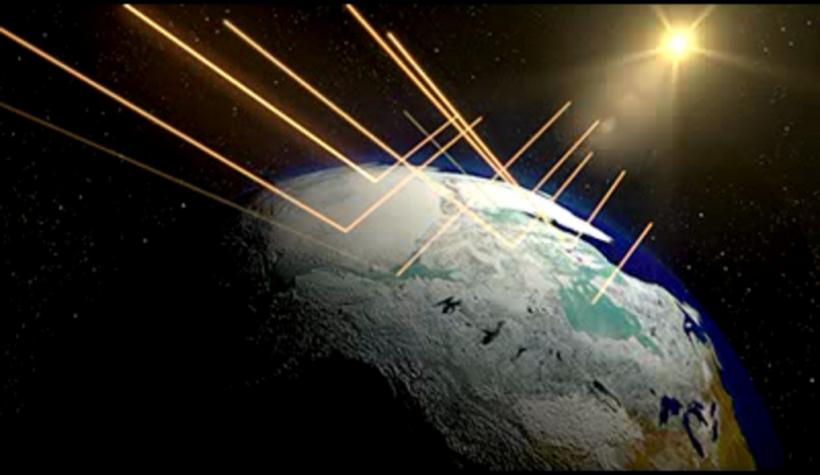
GLOBE protocols and learning activities that complement the Changing Albedo Values phenomenon through hands-on investigations are detailed below. Students can conduct their own investigations and see how their data related to global patterns by using GLOBE and My NASA Data together.
The GLOBE Cryosphere Protocols & Related ESDE Datasets page outlines the complementary Earth System Data Explorer data available by GLOBE protocol.
Changing Albedo Values
When sunlight reaches the Earth’s surface, some of it is absorbed and some is reflected. The relative amount (ratio) of light that a surface reflects compared to the total incoming sunlight is called albedo. A surface with a high albedo will reflect more sunlight than a surface with low albedo. Surfaces with high albedos include sand, snow and ice, and some urban surfaces, such as concrete or light-colored stone. Surfaces with low albedos include forests, the ocean, and some urban surfaces, such as asphalt.
GLOBE protocols can be used to study factors that can lead to albedo changes and the impacts of those changes.
Protocols
Air Temperature
Measure the current air temperature when an instrument shelter is not available. Current air temperature is measured using a thermometer held in the open air but in the shade for at least 3 minutes. Higher air temperatures can lead to melting snow and ice and lower albedo.
Student Outcomes:
- Weather can be described by quantitative measurements.
- Weather changes over different time and spatial scales.
- Weather changes over seasons.
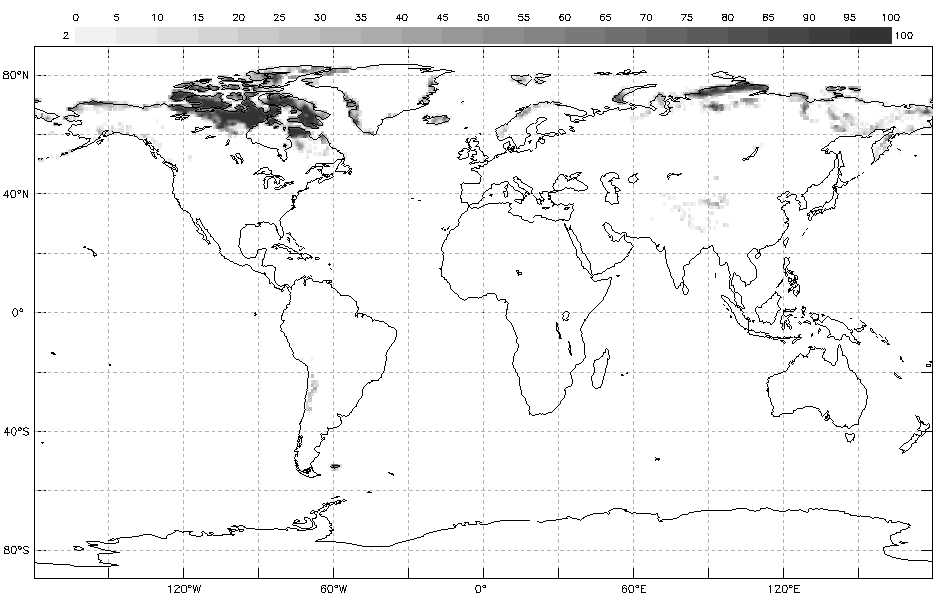
Land Cover Classification
Students locate, photograph, and determine the MUC class for 90 m x 90 m areas of homogeneous land cover. Long term changes in snow and ice cover and albedo can lead to changes from tundra to forest land cover.
Student Outcomes:
- Students will learn how to scientifically describe and classify a Land Cover Sample Site.
Snowboard Construction: A snowboard is a thin, flat surface that rests on top of earlier layers of snow. New snow falls on top of it and can be measured with a meter stick.
Student Outcomes:
- Prepare the snowboard to collect more snow
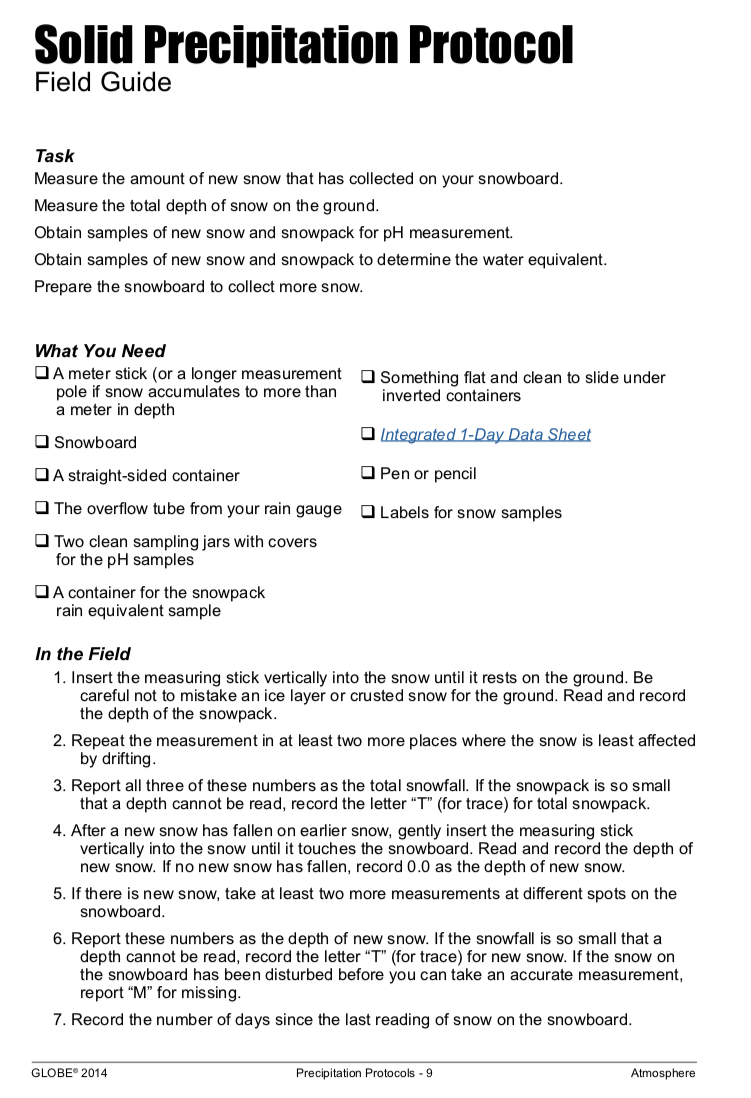 Solid Precipitation: Students will measure the amount of new snow that has collected on your snowboard in comparison with the total depth of snow on the ground.
Solid Precipitation: Students will measure the amount of new snow that has collected on your snowboard in comparison with the total depth of snow on the ground.
Student Outcomes:
- Students will measure the amount of new snow that has collected on your snowboard
- Students will measure the total depth of snow on the ground
- Students will obtain samples of new snow and snowpack for pH measurement
- Students will obtain samples of new snow and snowpack to determine the water equivalent
- Prepare the snowboard to collect more snow
Surface Temperature
Students use an infrared thermometer (IRT) to measure the temperature of Earth's surface. Increasing surface temperature can lead to melting snow and ice and decrease albedo.
Student Outcomes:
- Students will learn to use an infrared thermometer, and understand how different surfaces radiate energy.
Learning Activities
Check out the three learning activities to help prepare students for collecting data and to support the integration of MND with GLOBE in your curriculum.
Getting to Know Your Terrestrial Biomes ![]()
Help students become familiar with the Terrestrial Biome Classifications that the Seasons and Biomes project has adopted. Changes in snow and ice extent contribute to biome classification.
Student Outcomes:
- Use appropriate sources of information
- Synthesize data from different sources to create a coherent description of the main biomes
- Identify appropriate sources of information
- Organize data into tables
- Draw conclusions by synthesizing a variety of data
- Communicate results and explanations
How to Make a Climograph from Your Local Weather Data ![]()
![]()
Purpose: Students will assemble, analyze and graph the long-term air temperature and precipitation data for their general area, to understand the difference between weather and climate. These data can include snow and ice.
Student Outcomes:
- Weather is a day-to-day phenomenon and climate is a long-term average of weather
- The sun is the major source of energy for changes on the Earth’s surface
- Organisms’ functions relate to their environment
- Sunlight is the major source of energy for ecosystems
- Identify appropriate data sources
- Perform simple statistical calculations
- Organize data into tables and graphs
- Use appropriate tools and techniques
- Draw conclusions by synthesizing a variety of data
- Communicate results and explanations
Overview: Using Multispec software, evaluate and investigate changes that have occurred in the major land cover types of your GLOBE Study Site by examining the digital files of two Landsat satellite images that were acquired a few years apart.
Student Outcomes:
- Earth has many different environments that support different combinations of organisms
- All organisms must be able to obtain and use resources while living in a constantly changing environment
- All populations living together and the physical factors with which they interact constitute an ecosystem
- Humans can change ecosystem balance
- How to use maps (real and imaginary)
- The characteristics and spatial distribution of ecosystems
- Use land cover data and appropriate tools and technology to interpret change
- Gathering spatial data and historical data to determine validity of change hypotheses
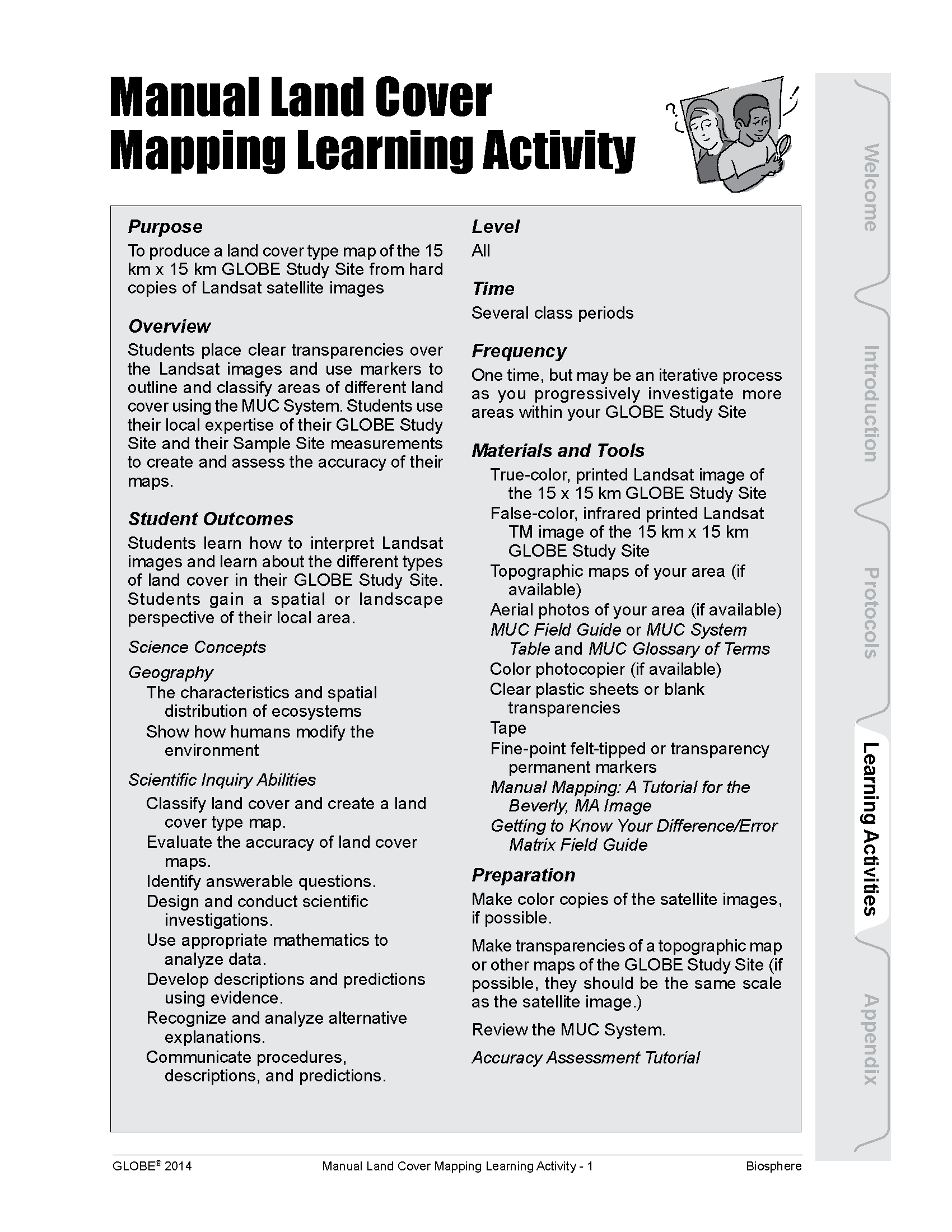
Overview: Produce a land cover type map of the 15 km x 15 km GLOBE Study Site from hard copies of Landsat satellite images
Student Outcomes:
- The characteristics and spatial distribution of ecosystems
- Show how humans modify the environment
- Classify land cover and create a land cover type map
- Evaluate the accuracy of land cover maps
- Use appropriate mathematics to analyze data
- Develop descriptions and predictions using evidence
Odyssey of the Eyes - Beginning

Overview: Familiarize students with the importance of perspective and introduce students to various scales of remotely sensed data.
Student Outcomes:
- Symbols are alternative ways of representing data
- Draw pictures that correctly portray at least some of the features of the thing being described
- How to describe the student’s own region from different perspectives
- How to display spatial information on maps and other geographic representations
- The spatial concepts of location, distance, direction, and scale
- Physical characteristics of places
- How to make and use maps and to analyze spatial distributions and patterns

Odyssey of the Eyes - Intermediate
Overview: Familiarize students with the concept of modeling as it is related to remote sensing and to the process of digitizing images.
Student Outcomes:
- Scientists rely on technology to enhance the gathering and manipulation of data
- Tables, graphs and symbols are alternative ways of representing data
- Use numerical data in describing and comparing objects and events
- Maps and satellite-produced images
- Characteristics, functions, and applications of maps, globes, satellite images
Odyssey of the Eyes - Advanced
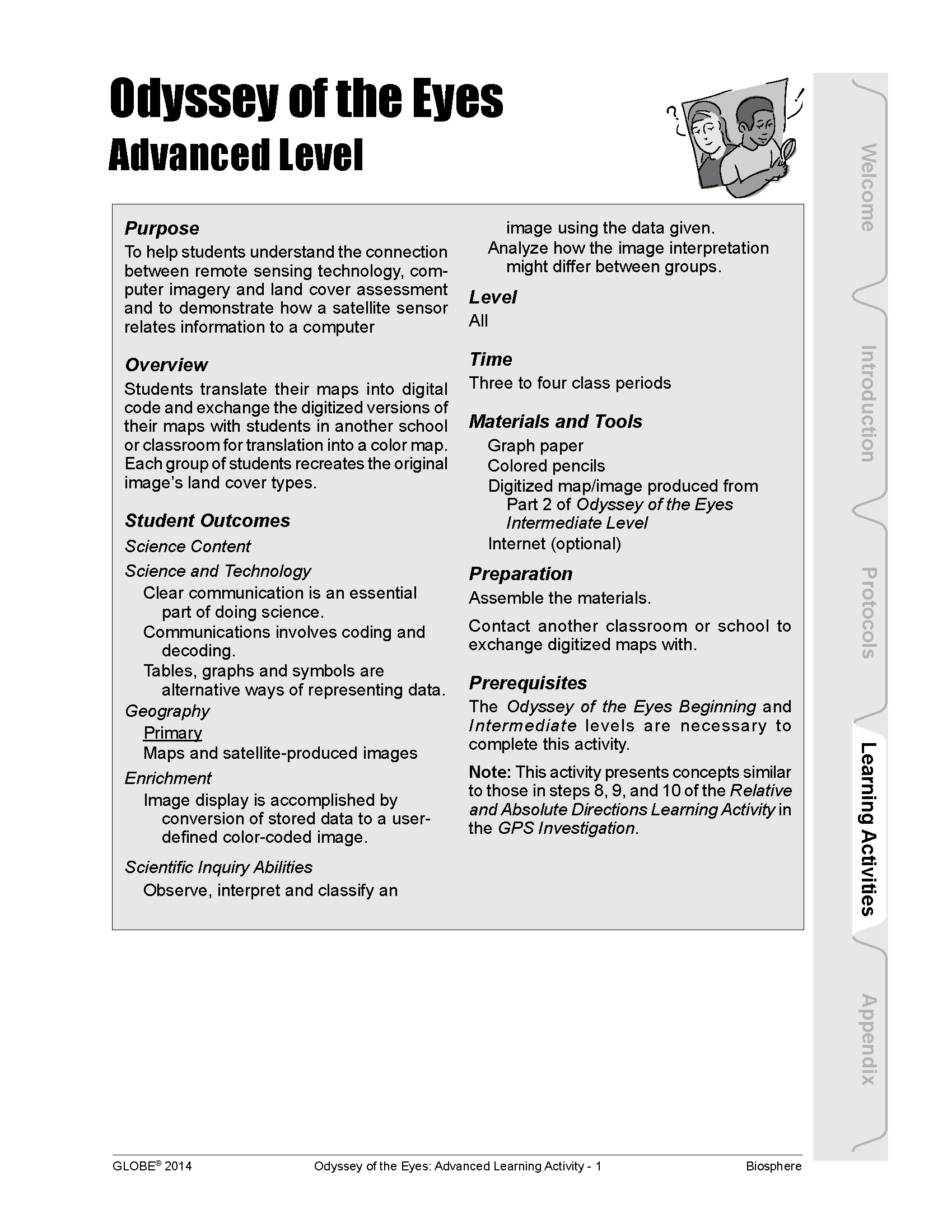
Overview: Help students understand the connection between remote sensing technology, computer imagery and land cover assessment and to demonstrate how a satellite sensor relates information to a computer
Student Outcomes:
- Clear communication is an essential part of doing science
- Communications involves coding and decoding
- Tables, graphs and symbols are alternative ways of representing data
- Maps and satellite-produced images
- Observe, interpret and classify an image using the data given
- Analyze how the image interpretation might differ between groups
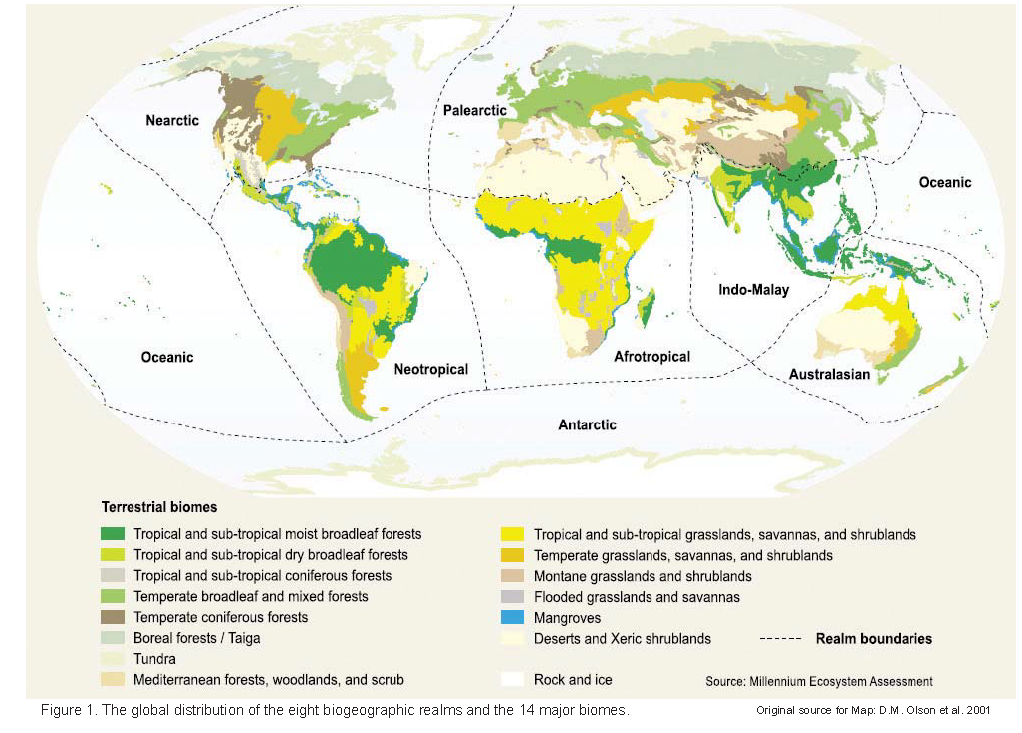
What are Some Factors that Affect Seasonal Patterns?
Purpose: Students use GLOBE data and graphing tools to compare the influence of latitude, elevation, and geography on seasonal patterns.
Student Outcomes:
- Weather changes from day to day and over the seasons.
- Seasons result from variations in solar insolation resulting from the tilt of the Earth’s rotation axis.
- The sun is the major source of energy at Earth’s surface.
- Solar insolation drives atmospheric and ocean circulation.
Source: GLOBE Website




